BLOG
Understanding Guardianships in New York State: Article 81 of the Mental Hygiene Law
The New York Times featured an article entitled, “As Cognition Slips, Financial Skills Are Often the First to Go.” According to the research cited therein, approximately 50% of adults in their 80s have dementia or some other cognitive impairment. Further, studies have revealed that “the ability to perform simple math problems, as well as handling financial matters, are typically one of the first set of skills to decline in diseases of the mind, like Alzheimer’s.” Unfortunately, this may leave the elderly vulnerable to poor decision-making or to exploitation by others.
Fortunately, there are protective mechanisms by which one can safeguard one’s finances or property, in the face of cognitive decline or impairment. Those include a durable power of attorney, which is a legally executed and witnessed document that allows an individual to appoint a competent adult to act on one’s behalf. A power of attorney can be granted for a specific, limited purpose or period of time. It can also be granted for much broader purposes such as handling all financial affairs on behalf of another person. It would remain in effect even when the individual (or “Principal”) is no longer able to make decisions due to health or mental capacity.
If an individual is receiving Social Security benefits, it is important to note that the U.S. Treasury Department does not recognize a power of attorney for the purpose of negotiating federal payments, including Social Security or SSI payments. In that instance, an individual or entity that wants to help manage another’s federal benefits must be designated as a Representative Payee. The designation requires approval from the Social Security Administration. Once approved, the Representative Payee is authorized to receive the federal benefits on behalf of the incapable or incompetent beneficiary.
An issue arises when an individual is no longer capable of managing his/her affairs, but does not have any protective mechanisms in place, including a power of attorney or a designated Representative Payee. In certain cases, one might have to resort to pursuing guardianship of an individual if there are no available alternatives.
The second form of guardianship is found within Article 81 of New York’s Mental Hygiene Law. An Article 81 guardianship is often used in the case of an individual with Alzheimer’s disease, dementia or some other extent of cognitive impairment. It is generally appropriate for an individual who at one time was competent, but now suffers from cognitive or functional limitations that are likely to cause the person harm. It may also be pursued for an intellectually disabled or developmentally disabled individual who may not fit into the requirements for a 17-A guardianship.
Unlike the Article 17-A guardianship, which gives broad powers to guardians that are similar to the authority a parent has over a child, Article 81 provides framework where the Court specifies exactly what decisions are made by the incapacitated person and what decisions are made by the guardian. This provides a tailored plan that meets the specific needs of the incapacitated person. A “Guardian of the Person” appointed under Article 81 can take care of assuring the person’s safety, health care, living arrangements, meals and/or other day-to-day activities and needs. A “Guardian of the Property” may also be authorized to manage the incapacitated person’s finances, property and other assets. The personal needs guardian and property guardian need not be the same individual. In some instances, it might be appropriate to have individuals act as co-guardians, with the joint goal of preserving the incapacitated person’s well-being and property affairs.
Article 81 allows for a broad range of individuals to petition for guardianship, including the alleged incapacitated person (AIP) him/herself, an adult relative, the CEO of a facility in which the AIP is a resident or patient, or any person otherwise concerned with the welfare of the AIP.
In order to obtain an Article 81 guardianship, the petitioner must file an order to show cause and verified petition with the Supreme Court for the county where the individual resides or is physically present. Typically, the Court will appoint an attorney for the alleged incapacitated person and/or a Court Evaluator, who is tasked with investigating the allegations in the petition.
The Court will schedule a hearing, and the AIP has a right to be present at the hearing. If, for any reason, the AIP is unable to attend the hearing at the courthouse, then the hearing will be conducted wherever the AIP is located (e.g. a nursing home, hospital, etc.). In some circumstances, the AIP’s presence at the hearing may be waived if it is found that the AIP is completely unable to participate in a hearing or if no meaningful participation will result from the AIP’s presence.
At the hearing, it must be proved that the appointment of a guardian is necessary and that the AIP either agrees to the appointment or is deemed incapacitated. An AIP is found to be incapacitated if he/she is unable to provide for himself/herself, and cannot understand the consequences of that inability. The parties will have the right to present evidence, and call and cross-examine witnesses, in order to establish whether a guardianship is appropriate. The burden is on the petitioner to prove that a guardian is necessary and that the AIP is either incapacitated or consents to the appointment.
If the petitioner is successful in establishing the need for a guardian, the Court will make certain findings, including the specific powers that an appointed guardian will be authorized with. The powers must be the least restrictive form of intervention aimed at addressing the specific needs of the AIP. The Court’s findings will be memorialized in an Order & Judgment, and thereafter, the appointed guardian must obtain a “Commission,” which is the official document that gives guardians the legal power to act on behalf of another adult. The guardian also completes an Oath and Designation, which attests that the guardian will carry out his/her responsibilities faithfully, honestly and carefully, and allows the county clerk to be served with any legal papers if the guardian cannot be found. In some cases, the Court may require the guardian to obtain a fiduciary bond, which is an added layer of protection for the AIP in case money is lost due to a guardian’s actions or mistakes. The Court may also require an appointed guardian to take a training course.
Any suitable adult can become a guardian. However, family members are typically given preference. A not-for-profit corporation, social services official, or a public agency can also be granted guardianship.
A guardian must file regular reports with the Court and visit the incapacitated person at least four times per year.
The guardianship lasts for the life of the incapacitated person. During the guardianship, the Court may be further petitioned to terminate the guardianship, modify the order and judgment, expand or remove powers given to the guardian, or remove the guardian from his/her appointment.
An Article 81 proceeding is generally more formal than an Article 17-A proceeding. It typically requires attorney involvement to guide petitioners through the legal process of obtaining a guardianship to safeguard an individual. Every situation is different, and it is always recommended that potential petitioners consult with a professional well-versed in Article 81 matters to help determine the best course of action for an individual’s situation and ongoing needs.
Living With Someone Who Has Dementia? A Few Words of Advice
By Robert Irving Miller, June 8, 2020
Having a family member with dementia is usually very difficult and challenging. We often work with families of people with dementia, to assist with their legal needs. Over time, I have learned that there are ways to deal with the situation that might help, even if they do not necessarily make it any easier. Here are some of the things that I have learned over the years:
A new “behavior problem” in an elderly person is often actually a sign of a physical illness, or possibly a reaction to a medication. If an elderly person’s behavior changes significantly, you should bring the person to see a doctor. Examples of behavioral changes include increased anger, increased falls, yelling, lethargy, loss of appetite and aggressiveness. There are plenty of other ways in which behavior can change as well.
Often a person with dementia follows another person around everywhere they go. This can be extremely frustrating for the person being followed. It is not unusual behavior in dementia, because the individual is trying to understand what is happening and wants some assistance to know what to do next.
People fall. Elderly people fall more and are at greater risk of injury. However, keeping someone mobile is usually better than them being confined to a chair or a bed all day. Immobility may cause a rapid deterioration in a person’s condition and place her or him at risk of serious medical complications. It seems important to maintain mobility, even if there is a risk of a fall.
One of the best things a family living with a relative suffering from dementia can do is to become educated about how to communicate with and respond to that person. The federal Centers for Medicare and Medicaid Services (CMS) has a training program for nursing homes called “Hand in Hand Dementia Training.” If you search on the Internet for CMS Hand in Hand program, it will lead you to videos of the various training modules for the program. I have taken some of that training and find it very useful. Someone who is caring for a family member or living with a family member or friend who has dementia can benefit greatly from the Hand in Hand training. Of course, the person with dementia also benefits because he or she is assisted by more knowledgeable people. If you have a relative in a nursing home, it is also good to take the Hand in Hand training, to understand the disease process and reduce some of your stress as a result.
If the person with dementia is living at home or with relatives, there is always the possibility that he or she may wander off and become lost. Sometimes wandering cannot be predicted. It is important to anticipate that such wandering may occur. Experts advise having a “Safe Return Program” that includes notifying neighbors and nearby businesses about the possibility that the person will need assistance if he or she is seen walking around. Some people keep a log, noting the person’s clothing each day. Therefore, the police and neighbors can be told to be on the lookout for a person wearing a particular color shirt, a specified color pair of pants, and a certain color or style jacket. It is also useful to have printed photographs of the individual to hand out in the neighborhood in case the person with dementia disappears and later goes to a neighbor’s home or a nearby store. Showing someone the photo on your phone is okay, but there may be someone else on duty at the store, or someone else may be answering the door at a residence hours later, when the wandering person shows up. Of course, the paper with the photograph on it can also have the family telephone number and contact information, so that someone can come back and retrieve the wandering relative. However you do it, it is important to have a response plan for the possibility that your relative with dementia may disappear.
This blog is not intended to be specific legal or nursing advice for any particular situation. We strongly encourage you to communicate with your family physician and to develop a relationship with your county office for the aging, where you can obtain additional information about how to cope with the stress and difficulty of having someone in the household with dementia.
The Reality of COVID-19 – A Nurse’s Perspective
By Robert Irving Miller, R.N., M.S., J.D., May 19, 2020
People who have never worked in an ICU have no idea how difficult it can be to keep a critically ill patient alive. Survival is not always possible. Illness, suffering and death are not abstractions to nurses. Nurses know all too well the high cost and ravaging effects of pulmonary infections and systemic sepsis. People who refuse to wear masks in public places, who deny the existence of a life-threatening virus, or don’t comply with social distancing recommendations most likely have no idea how much harm they are possibly causing, until they or someone they love becomes ill with the COVID-19 virus. They are literally putting their own and others’ lives at risk. They are also putting our economy at risk because infecting others will prolong the pandemic. Apparently, it is at least as easy to catch COVID-19 as it is to catch a head cold.
In a very ill person, coronavirus pneumonia interferes quite badly with the respiratory gas exchange between the lungs and the blood vessels. Not enough oxygen can get into the body, which is needed for the function of all the important organs, including the brain, kidneys and heart. The waste products of cellular metabolism need to leave the body or they accumulate in the blood as acids. Usually some acids leave the blood in the lungs, become carbon dioxide and are exhaled. But if a person cannot exhale efficiently, the acids accumulate and cause harm throughout the body. Acidosis can lead to death, just as can lack of oxygen. To facilitate breathing and the blood/lung gas exchange, the patient will often be put on a ventilator, a machine which mechanically moves breathable air into and out of the lungs.
A patient on a ventilator with COVID-19 pneumonia needs a plastic tube positioned from outside their mouth into their trachea, with a cuff around the outside of the tube that is inflated to prevent air and oxygen from the ventilator from escaping up and around the outside of the tube. It is called an endotracheal tube, which is connected to the ventilator by other tubing. The tube is pretty much intolerable to a conscious person, so the patient is sedated. The ventilator moves oxygenated air into the lungs and facilitates exhalation of carbon dioxide, if the patient’s lungs will permit that. Because the patient is unable to cough in the normal way while on the ventilator, and needs to have secretions removed from the lungs, a nurse or respiratory therapist will periodically disconnect the ventilator, put the ventilator alarm ‘on pause’ and introduce a suction catheter through the endotracheal tube and into the patient’s lungs. The procedure of having secretions sucked out of the body and into a plastic canister is extremely uncomfortable if the patient is conscious and causes coughing or choking reactions on the part of the patient.
The nurse talks to the patient a lot, even if it is not clear that the patient can hear. The nurse is always explaining to the patient what is about to be done to them, and why it is being done. The nurse tries to reassure and distract the patient, since the reality of being very ill with a fever, on a ventilator, in an ICU, and surrounded by people wearing hazmat outfits can be terrifying and depressing.
Of course, the nurse has reason for apprehension as well, given the risk of contracting the patient’s life-threatening infection. Health care providers have disproportionately become infected and many have died because of COVID-19.
This process of suctioning an intubated patient with COVID-19 poses a grave threat to the nurse and respiratory therapist. Suctioning may release the potentially lethal virus into the air. The nurse, therapists and others caring for the patient will wear a face mask or two, a fluid impermeable gown if one is available, gloves and a face shield. Nurses spend a lot of time at the bedside of a ventilated patient managing intravenous fluids, administering mediations, listening to the patient’s lungs, checking their heart rhythm on the cardiac monitor, and checking blood pressure, temperature and blood oxygen saturation levels. They reposition the patient regularly and may percuss the chest periodically with cupped, gloved hands to break up congestion in the lungs. They also make sure that the patient is getting nutrition through one tube or another, and attend to the patient’s hygiene, among many other things. Drawing blood from the patient, checking fingerstick blood sugars, communicating findings to the physicians and implementing orders are among the many activities of an ICU nurse.
If the patient is very fortunate, he or she will recover lung function and be weaned off the ventilator. Repositioning heavyset patients in a way that takes abdominal pressure off the chest has sometimes been found to be helpful, even to the point of eliminating the need for mechanical ventilation. Patients have reportedly required a week or more of mechanical ventilation before beginning to recover, all the while receiving attentive and continuous care around the clock from highly skilled and educated nurses.
The nurses, along with social workers and others, are also usually the COVID-19 patient’s only link to their family. Hospital staff members try to find opportunities for patients to see loved ones via video using phones or tablets. Sadly, those are often the last communications between the patient and their family.
Despite all these efforts, most patients placed on a ventilator do not recover. They die. Reports indicate that 80% of patients who required mechanical ventilation for COVID-19 died during a period of several weeks. COVID-19 patients reportedly are at risk of developing blood clotting complications in organs including the lungs, kidneys and brain. Some COVID-19 patients have had strokes.
Inside those uniforms: the gown; the mask; the gloves and the face shield; it is hot and uncomfortable. Nurses used to be able to wear separate masks for separate patients and had access to several masks each day. Now they often have to put their only mask in a paper bag at the end of the shift and use the same mask the next day – and the day after that, while standing next to, turning, washing, suctioning, medicating and consoling their COVID-19 infected patients. Changing out of their gown and other protective equipment, even for a restroom visit, is complicated and risky.
If a store won’t let you in without a face mask, they are trying to protect their customers and workers from an infection that may land them in an ICU, may put them through hell, and may ultimately kill them. You have no good reason whatsoever to refuse wearing a face covering in public. You have no legitimate reason to ignore social distancing recommendations.
As mentioned, nurses are well acquainted with suffering and death. Do your best to make sure that it is not your suffering and death they have to deal with next.
“Enough is Enough”: What You Need to Know About the Law
The passage of the New York State Education Law that’s being called “Enough is Enough” means that all private colleges and universities in the state must amend their Title IX policies (“codes of conduct”) to incorporate the requirements of the new law, or risk losing state aid and assistance. A certificate of compliance with the provisions of the statute must be filed annually with the Education Department commencing on or before July 1, 2016. In addition, each institution must file its amended code of conduct with the state by July 1, 2016, and thereafter every ten years.
The stated purpose of the new law is to reduce the incidence of sexual assault, dating violence, domestic violence and stalking on campuses statewide. Toward this goal, institutions of higher learning must, among other things, adopt policies stating that the affirmative consent of both parties is required for sexual activity and that there will be amnesty for students who report sexual assault/violence that occurred while they were violating policies on drug and alcohol use. Institutions must also annually distribute to all students a “Students’ Bill of Rights” that informs victims of sexual violence of their legal rights, including their right to disclose the sexual assault/violence to both the school and outside law enforcement agencies such as the state police.
The law requires schools to provide numerous other disclosures to students who report (“reporting individuals”) sexual assault/violence. Institutions are also now required to make at least annual “campus climate assessments” to gauge the general awareness of the new law’s requirements. This will be done by anonymous questionnaires and the results published on the school website. Each school must also adopt an ongoing education campaign, consistent with the Clery Act and the Violence Against Women Act, to train all first year and transfer students on a number of topics concerning sexual assault, domestic violence, dating violence, and stalking.
The law is complex and detailed. The importance of timely and full compliance with it cannot be overstated, as state financial aid is at stake. Sholes & Miller has many years of experience in investigating all types of Title IX complaints on campus, involving students, faculty and employees. We can assist colleges and universities in rewriting their policies so as to be in compliance with the law, in providing Title IX training, and in investigating Title IX complaints.
– Sarah E. Sholes
Going To Court: Can I Do It Myself?
We have seen some rather terrible things happen to people when they have gone to court without at least consulting an attorney. Therefore, we always recommend that people at least speak with an attorney before deciding to proceed without one.
New York State does, however, have “do-it-yourself forms,” and computer programs that are designed to help people fill out certain legal papers without the assistance of an attorney. Through a program called Access to Justice, the New York State court system provides programs and advice for people who wish to fill out the following court forms:
- Small Estate Affidavit;
- 17-A Guardianship Petition;
- Name Change Petition;
- Support Modification Petition;
- Paternity Petition;
- Support Enforcement/Violation Petition.
The information and forms can be found at: www.nycourthelp.gov
This and our other blogs are not intended to be legal advice for any particular situation.
Understanding Guardianships in New York State: Article 17-A of the Surrogate’s Court Procedure Act
An article 17-A guardianship petition is used when one wants to appoint a guardian for an intellectually disabled[1] or developmentally disabled person, or for a person diagnosed with a traumatic brain injury. The guardianship process can appear complicated, but the process is streamlined and can be done without the assistance of an attorney. Understanding the process of an Article 17-A guardianship can make it easier.
Once a person reaches the age of 18, he/she has the right to make decisions independently, just like any other adult. No other person has the authority to make personal, medical and/or financial decisions for the individual, including that person’s parents or other legal guardian. However, what happens when the individual has an intellectual or developmental disability and lacks the ability to make decisions? This is where an article 17-A guardianship comes into play. It provides a process where another individual (often a parent, relative or a legal guardian) is granted guardianship over the individual such that they are given broad authority to make decisions on behalf of their ward. A guardian can be an individual, a non-profit corporation, or a public agency.
Article 17-A guardianships are specifically used for individuals living with an intellectual disability or a developmental disability that began prior to reaching 22 years of age (including disabilities attributable to cerebral palsy, neurological impairment and autism), and those diagnosed with a traumatic brain injury.
The first step in obtaining a 17-A guardianship is to file a petition with the Surrogate’s Court located in the individual’s county of residence. Those eligible to petition the Court include a parent, any interested adult, or the intellectually disabled or developmentally disabled person themselves, if they are at least 18. A non-profit corporation with the power to serve as guardian can also petition the Court, such as a social services agency that cares for or houses intellectually and/or developmentally disabled persons.
The petition must be accompanied by certifications from two professionals that the individual needs a guardian. The professionals can be either two physicians or a physician and a psychologist. They must determine that the individual has an intellectual disability or developmental disability which is permanent or likely to continue indefinitely.
Once you have filed the petition and sworn affidavits from the professionals with the Court, the law requires that certain persons be served with copies of the petition and/or a notice of the proceeding. The Court will subsequently hold a hearing to determine whether the guardianship will be granted. In certain circumstances, the Court may dispense with the need for a hearing.
If the Court grants the appointment of a guardian, letters of guardianship are issued. Once declared a guardian, you have broad authority to make decisions on behalf of the disabled person, similar to the authority parents have over minor children. These decisions can include health care decisions, financial and property matters, and housing.
As a guardian, you must make all decisions in the best interest of the individual. If the individual’s wishes, including moral and religious beliefs are known, they should be taken into consideration.
The length of a guardianship lasts for the length of the individual’s life. The Court may be petitioned to discharge the guardian, appoint a successor, modify or limit the guardian’s powers, or otherwise alter the guardianship order. You may also appoint successor guardians, in the event that the ward outlives you.
The forms used to petition the Surrogate’s Court for an article 17-A guardianship can be found online at: https://www.nycourts.gov/forms/surrogates/guardianship.shtml. While the forms may be self-explanatory, the process itself can be overwhelming and confusing for people to navigate, especially in a situation where one is faced with the tremendous responsibility of caring for the major aspects of another’s life. It is always helpful to reach out to a professional that is well-versed in guardianship matters to determine whether an Article 17-A is the appropriate tool to help a person living with a disability, as well as to explain the process of obtaining a guardianship and the duties that accompany the guardianship appointment.
In our next segment, we will discuss guardianships under Article 81 of the Mental Hygiene Law. While most would agree it is a more complex proceeding, it provides a guardianship scheme that is tailored to the individual needs of the person, while at the same time affording the person as great amount of independence as possible.
[1] Article 17-A has not yet been amended to replace the term “mental retardation” with “intellectual disability,” but for the purposes of this blog, “intellectual disability” will be used in acknowledgment that the term has replaced “mental retardation” in many states. Notably, in 2010 the NYS Office of Mental Retardation and Developmental Disabilities changed its name to the NYS Office For People With Developmental Disabilities. That change brought New York into solidarity with 48 other states which acknowledged that the term “mental retardation” is often hurtful and disrespectful when used to refer to individuals living with an intellectual disability.







